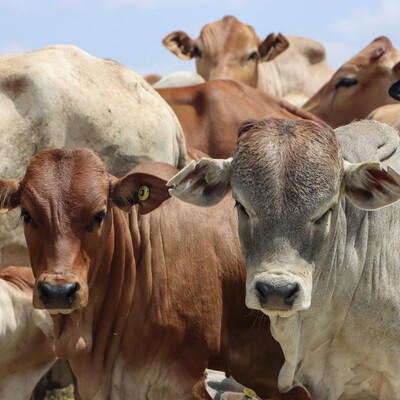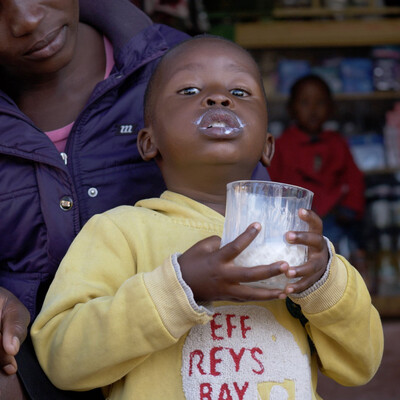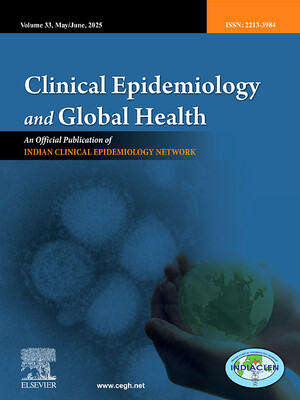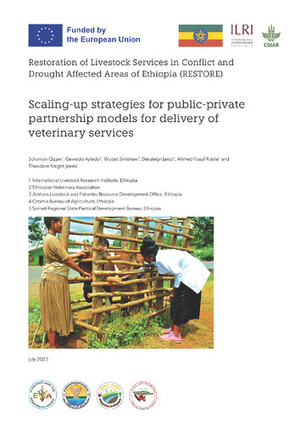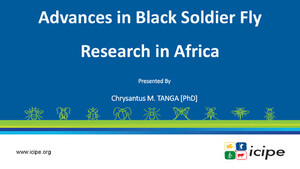
One Health: Key to sustainable livestock—and human and environment—health
The header image is a farm couple preparing to milk their cow in Busia, Kenya (photo credit: ILRI/ Charlie Pye-Smith).
Livestock play multiple roles in the livelihoods of over half a billion people in developing countries, especially in rural Africa. Livestock keeping enables Africa’s smallholder farmers to build resilient livelihoods, to maintain their food and nutritional security and to escape chronic to severe poverty. The continent’s livestock-keeping communities typically live close to both wild and domesticated animals, sharing their environments. Even the few rural households that don’t own animals often share with animals communal sources of water and food, which can expose those households to pathogens originating in animals but able to ‘jump’ species to humans.
Africa’s livestock production systems present big opportunities as well as challenges. With Africa’s rapidly rising populations, incomes and urbanization, demand for meat, milk and eggs is increasing fast. To meet Africa’s rising demand for animal-source foods, its many small-scale livestock systems will need to grow and grow in ways that are, in addition to profitable, healthier, more environmentally friendly and more equitable.
Rapid, unplanned and unregulated development of the livestock sector can threaten the health of people, animals and the environment alike. To mitigate such threats, a multidisciplinary and multisectoral approach known as ‘One Health’ must be applied to enhance food safety, sustainable livestock production and environmental stewardship, say experts in a panel co-hosted by the International Livestock Research Institute (ILRI) and the Global Agenda for Sustainable Livestock (GASL). This session, titled ‘Prevention is cheaper than cure: One Health in practice for sustainable livestock production in sub-Saharan Africa’ was held at the virtual 13th Global Forum for Food and Agriculture (GFFA) hosted by Germany.
Why invest in livestock?
Recommendations to scale back meat consumption for health reasons or to combat climate change have been on the increase in the Northern hemisphere. Livestock, however, are a pillar of the global food system. According to the Food and Agriculture Organization of the United Nations (FAO), livestock contribute on average 40% of the global value of agricultural output. Furthermore, livestock remain critical assets in millions of Africa’s vulnerable farming communities, who rely on livestock for their food security, incomes and livelihoods.
Speaking during this expert panel session, Björn Niere, deputy head of a ‘Pandemic Prevention, One Health, Animal Health, Biodiversity’ program at Germany's Economic Cooperation and Development Ministry (BMZ), said ‘More than one billion people worldwide depend on animals for their livelihoods. And livestock allows agricultural production in areas that are not suitable for crop production. Food-producing farm animals therefore are central to food security–just think of the 300 million pastoralists that herd cattle and other ruminant stock across Africa.
In addition to the fact that animals also provide vital macro- (protein) and micro-(vitamin and mineral) nutrients to sustain adequate human diets, livestock are integral components of diversified (aka ‘sustainable’) agricultural systems. By respecting the many intimate links among human, animal and environment health, One Health approaches are key to a healthier as well as more equitable world.
Adopting and implementing One Health approaches are essential to achieve the UN’s Sustainable Development Goal (SDG) to achieve zero hunger and should be incorporated fully into policymaking to detect and prevent health threats that occur at the human, animal and environment interface.
‘One Health has taken strong root in Africa—more than in the developed world—because the continent carries the highest per capita burden of zoonotic and foodborne diseases’, said Dieter Schillinger, deputy director general of biosciences at ILRI during the expert panel session. He added that, ‘In Africa, there are longstanding One Health networks, academic programs and implementing bodies as well as political commitments, which make One Health thrive.’
Agricultural ministers attending the 13th Global Forum for Food and Agriculture Ministers’ Conference vowed to support the One Health approach, which fosters the integration of human, animal, plant and environment health expertise and joins up work by other relevant sectors at local, national, regional and global levels. One Health initiatives are central to preventing and controlling outbreaks of ‘zoonoses’ (diseases transmitted from animals to humans), to reducing the risks of these zoonotic diseases leading to (global) pandemics, and to better controlling the rise of drug resistance in bacteria and other pathogens. The agricultural ministers strongly underlined the need for intensified, sustainable and long-term multi-sectoral and multi-disciplinary dialogue and solutions across the health, agricultural, veterinary, forestry and environmental sectors.
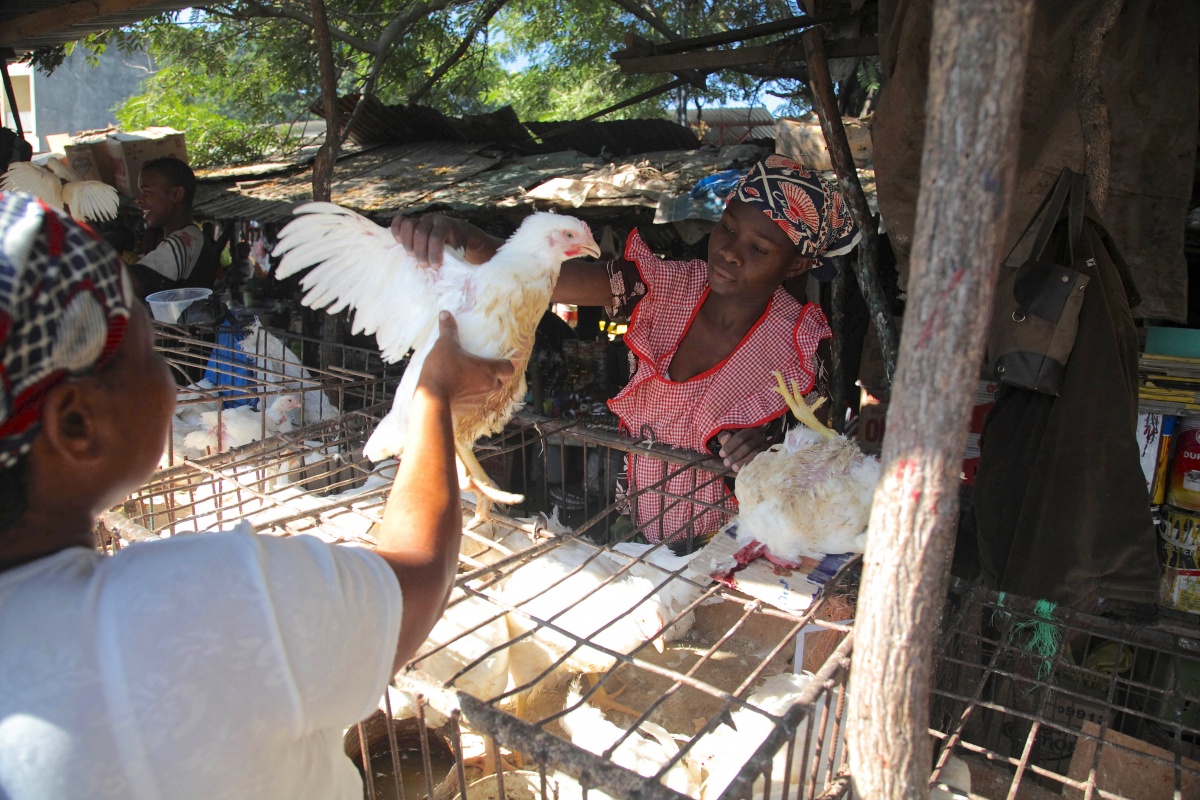
A trader sells chickens in Maputo's Xipamanine traditional market, in Mozambique (photo credit: ILRI/Mann).
Wet markets: To close or not?
With evidence suggesting that the coronavirus causing COVID-19 may have emerged from a ‘wet market’ in Wuhan, China, there have been calls to ban wet markets. But ILRI’s bioscience director Dieter Schillinger reminds people that, ‘Wet markets are an essential source of affordable, fresh and nutritious food for hundreds of millions poor rural and urban people. More than 80% of the meat, milk, eggs and fish produced in developing countries is sold in traditional markets.’
Many of these wet markets are also places where farmers, especially women, can sell directly to consumers and earn an income. While wet markets often lack modern infrastructure and can escape effective food safety regulation and inspection, ‘Shutting them down is not the solution. Our research has shown that it is better to improve the conditions of these markets by enhancing their environmental practices, such as proper waste disposal, and by training food retailers in disinfection, good hygiene and use of protective equipment’, said Schillinger. At the same time, the health of humans, animals and environments are closely linked in wet markets, so there is need to monitor the markets for early detection of pathogen outbreaks and spread.
While much of wildlife trade and consumption is often illegal, the world’s poorest countries are the richest in biological diversity; in these countries, trade in wildlife can be a pathway to sustainable development. Doreen Robinson, chief for wildlife at the United Nations Environment Programme, believes that sustainable wildlife trade often benefits biodiversity conservation, human safety, livelihoods and food security and helps keep the human-animal ecosystem in balance. ‘The environment has the potential to offer healthy natural food if it is well taken care of’, Robinson said.
Both animal and public health can be bettered by making much greater investments in preventive vaccine campaigns and animal disease surveillance in rural areas. Vaccinating animals improves food safety and reduces the risks associated with antimicrobial resistance. Christian Griebenow, managing director of Vétérinaires sans Frontières (VSF) Germany, said that, ‘Deadly zoonotic diseases can be controlled by vaccinating livestock and strengthening disease reporting mechanisms.’
The consensus of these experts was that livestock production contributes to better lives in many ways, including combatting hunger and undernutrition and generating incomes and employment. This was echoed in a communiqué by the ministers attending the 13th Global Forum for Food and Agriculture Agricultural Ministers Conference, where they jointly recognized the pivotal role that livestock play in ensuring food security and nutrition and sustainable livelihoods for millions. The ministers called for the implementation of appropriate livestock production methods to guarantee food safety and animal health and stressed the need to support smallholder livestock farmers in developing countries by helping them to gain access to investment, technology and capacity building for good husbandry practices, hygiene and biosecurity.
By striking a balance between meeting the demand for animal products and focusing on mitigating health risks in ways that take account of both livestock livelihoods and reducing the environmental impact of the livestock sector, livestock production can be sustainable. A One Health approach can help make livestock systems sustainable and equitable while enhancing animal, human and environment health.
Click here to watch the panel session and here for other sessions.
Click here to watch a short video, ‘A look at One Health in Africa’.
More information on the One Health landscape in sub-Saharan African countries is here.
More information on how climate change interacts with inequity to affect nutrition is here.
Click here for more information on a ‘livestock sector investment and policy toolkit’.
Read about Bundling innovations to transform agri-food systems.
The effects of food systems innovations on the Sustainable Development Goals are articulated here.







